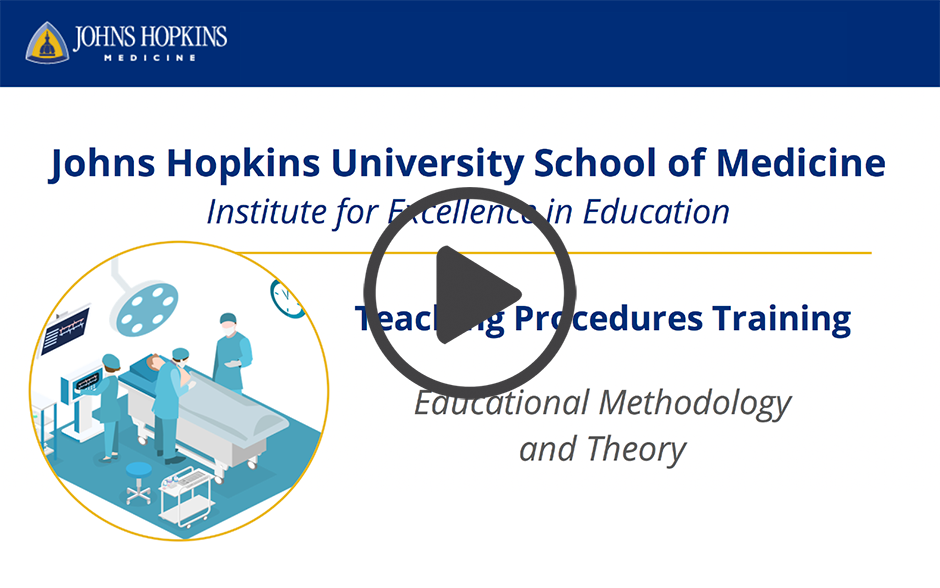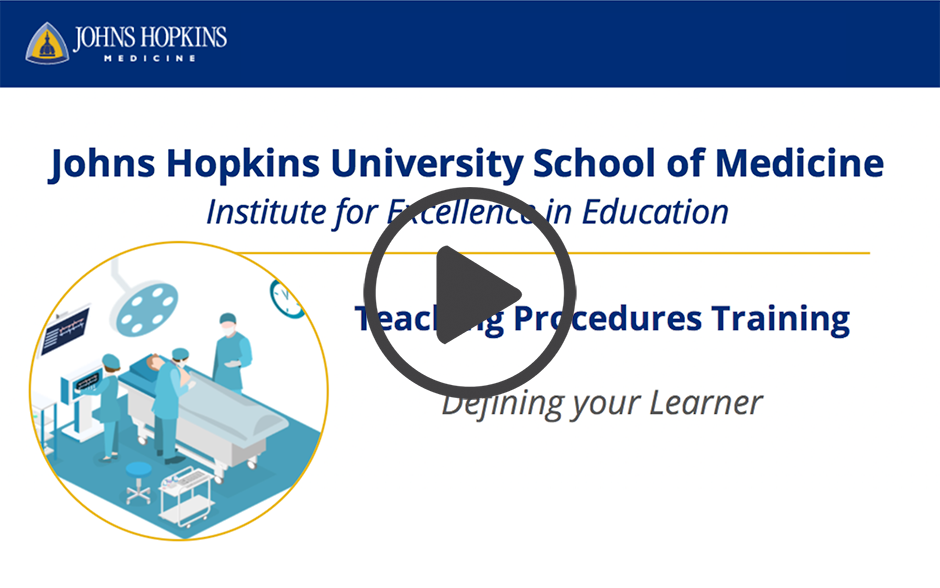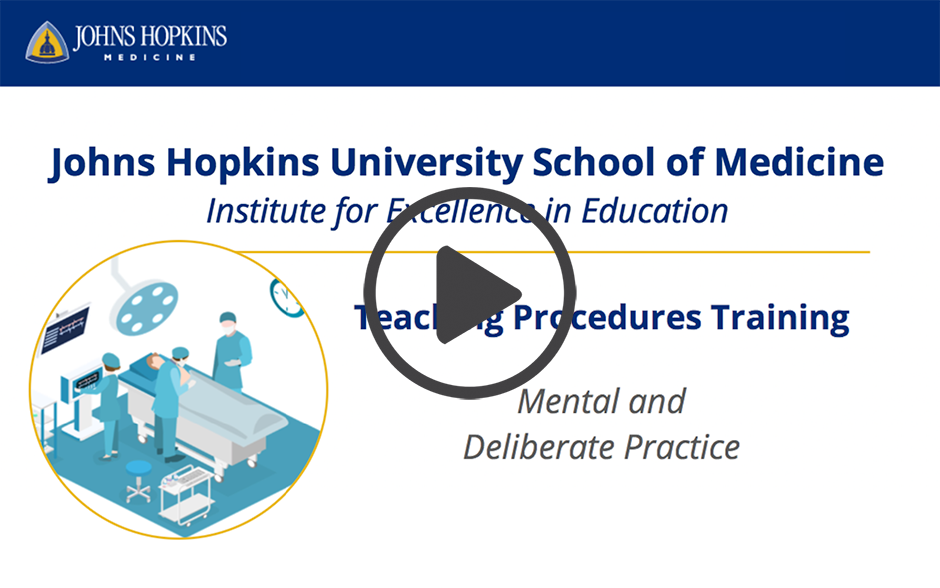Comments? Contact IEE.
1. Objectives
- Discuss educational theories and their implications for successful adult learning strategies.
- Recognize the need to define each of their learners’ backgrounds and goals to effectively teach them.
- Demonstrate how to teach in procedural settings for both awake and sedated patients.
- Explain the benefits of using simulation when teaching procedural skills.
- Develop a plan to break down a procedure into teachable skills and assign them to the most appropriate learners.
2. Preparation in Advance
- Who are my learners?
- What is a common procedure I would teach them?
- How would I break that procedure down into individual tasks and skills?
- How would I assign those tasks and skills and teach them to each of my learners?
- How would I incorporate the learner into the procedure?
- What challenges might I face in teaching this procedure to each of my learners?
3. The Module
4. Application of the Module
Consider the common procedure you identified before completing the modules and how you would break it down and teach it to your learners. Now that you’ve gone through the modules, how would you tweak your original plan? Is there anything you’d add to or remove from the plan based on what you just reviewed?
5. Next Steps and Coaching
Think of the last procedure you taught to one or more learners and what you can improve upon with either the same learners or the next ones you teach. If you are in need of assistance coming up with a teaching plan, please reach out to any of the authors listed below for coaching and support.
6. Summary Points
Educational theories suggest trainees must become aware of their deficiency in a skill before they can become competent in performing it. Teachers must consider what their learners already know and what they need based on their prior experience and their current goals. Teachers must maximize time teaching in actual procedures by adequately preparing and debriefing each procedural learning experience. Simulation methods are powerful tools to teach procedures and have students practice them while avoiding patient harm. Thorough practice, both mental and deliberate, is essential for students to master certain procedural skills.
About the Authors
 Melissa Camp, M.D., M.P.H.
Melissa Camp, M.D., M.P.H.
Associate Program Director
Halsted General Surgery Residency Program
Assistant Professor of Surgery
Johns Hopkins University School of Medicine
 Silka Patel, M.D., M.P.H.
Silka Patel, M.D., M.P.H.
Assistant Professor
Gynecology and Obstetrics
Johns Hopkins University School of Medicine
 Bethany Sacks, M.D., M.Ed.
Bethany Sacks, M.D., M.Ed.
Assistant Program Director
Department of Surgery
Assistant Professor of Surgery
Johns Hopkins University School of Medicine
 Nicole Shilkofski, M.D., M.Ed.
Nicole Shilkofski, M.D., M.Ed.
Vice Chair of Education
Department of Pediatrics
Associate Professor of Pediatrics
Johns Hopkins University School of Medicine
Module Editor
Rachel Levine, MD, MPH
Associate Dean for Faculty Educational Development
Associate Professor of Medicine
Associate Vice Chair for Women’s Academic Careers, Department of Medicine
Johns Hopkins Bayview Medical Center
Johns Hopkins University School of Medicine





